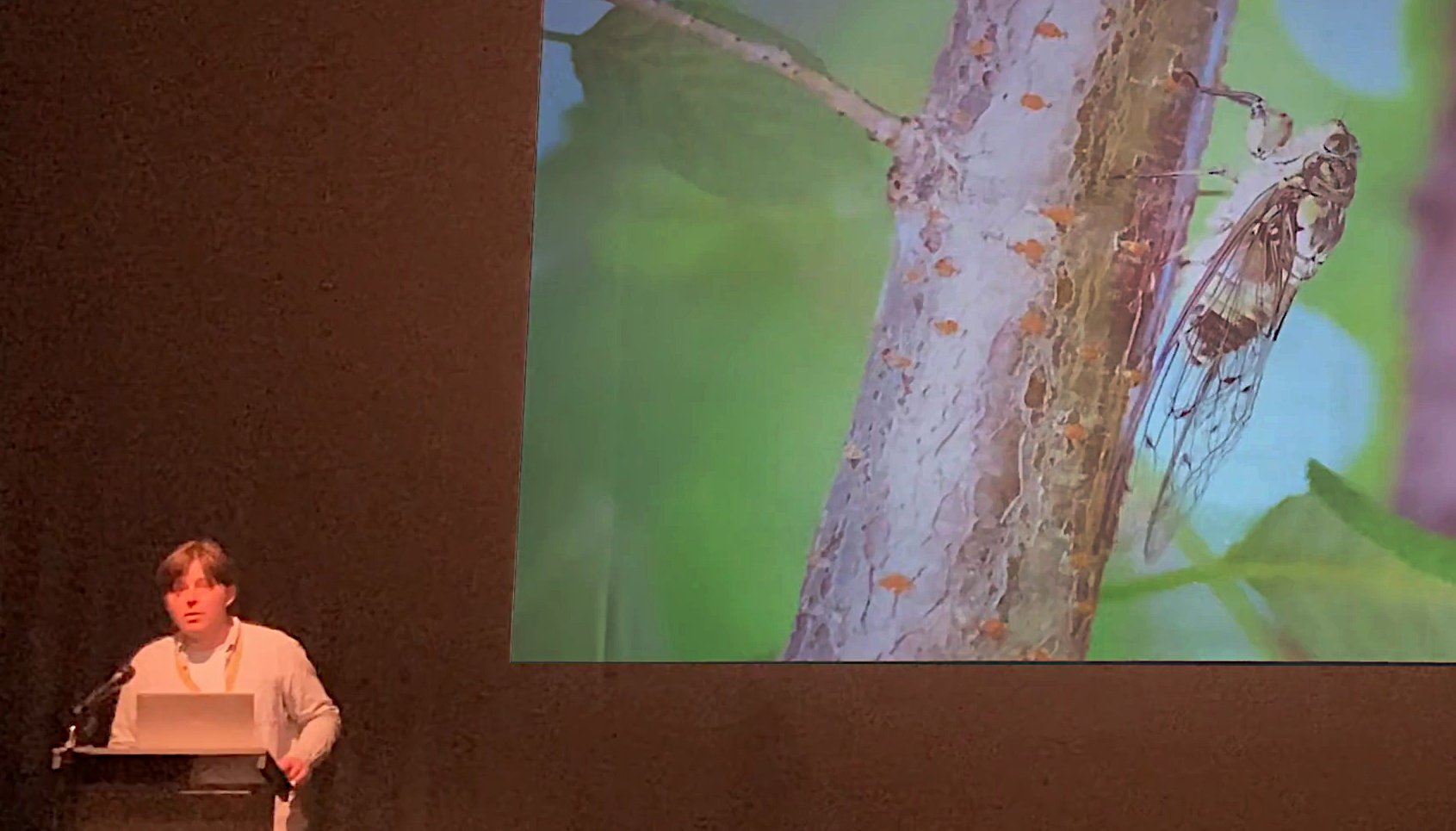Since long before music and since long before humans,
life has been evolving many forms of oscillation and resonation.
And as our species appeared,
many of these forms helped to determine the natural sonic environments
in which we and our instrumental control of musical sound then also evolved.
These two general observations
motivate,
in many possible specific ways,
also modeling bioacoustics
when pursuing new sound-generating processes for musical use.
This 7-minute video
presents a case study of this,
introducing an algorithm that simulates the calls of Hyalessa maculaticollis,
a species of cicada native to parts of East Asia.
The algorithm offers real-time control over the insect's call sequence.
Notably, this also includes
imposing the production of a specific musical pitch
on the detailed simulation of anatomical mechanics.
The
paper
introducing the algorithm
describes the physical model
and includes the runnable, annotated source code.
Also, more generally,
it points out
trade-offs and inherent contradictions
when modeling bioacoustics for tonal use.
The paper has been published
here,
and archived
here.
